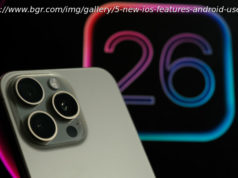No one ever said, « Geez, my iPhone is too fat; Apple better give me a razor-thin phone next time. » Yes, I’m talking about the iPhone Air.
No one ever said, « Geez, my iPhone is too fat; Apple better give me a razor-thin phone next time. » Yes, I’m talking about the iPhone Air, Apple’s manna for the fashion-obsessed vapid drones.
Disappointed with the uptake for its ultra-slim smartphone, Apple is already asking suppliers to cut the production of components for the iPhone Air, by as much as 80 percent if Ming-Chi Kuo’s latest report is anything to go by.
This is not a surprise outcome in hindsight. After all, the iPhone Air does have the lowest battery capacity in the just-released iPhone 17 lineup.
Yet, Apple could have easily avoided all the brouhaha around the iPhone Air’s gimped battery by moving a little out of its comfort zone for once, and opting for silicon-carbon batteries from the get-go. Sloth, thy brand is Apple.Silicon-carbon batteries could have ensured plenty of juice for the iPhone Air even with its slim form-factor
Conventional lithium-ion batteries typically consist of a lithium oxide cathode and a graphite anode. As the battery is discharged, lithium ions move from the anode to the cathode by traversing the electrolyte, which is usually made up of a polymer in Li-Pol batteries.
Simultaneously, the positively charged anode attracts negatively charged anions, which then chemically react with the anode, giving up electrons in the process.






